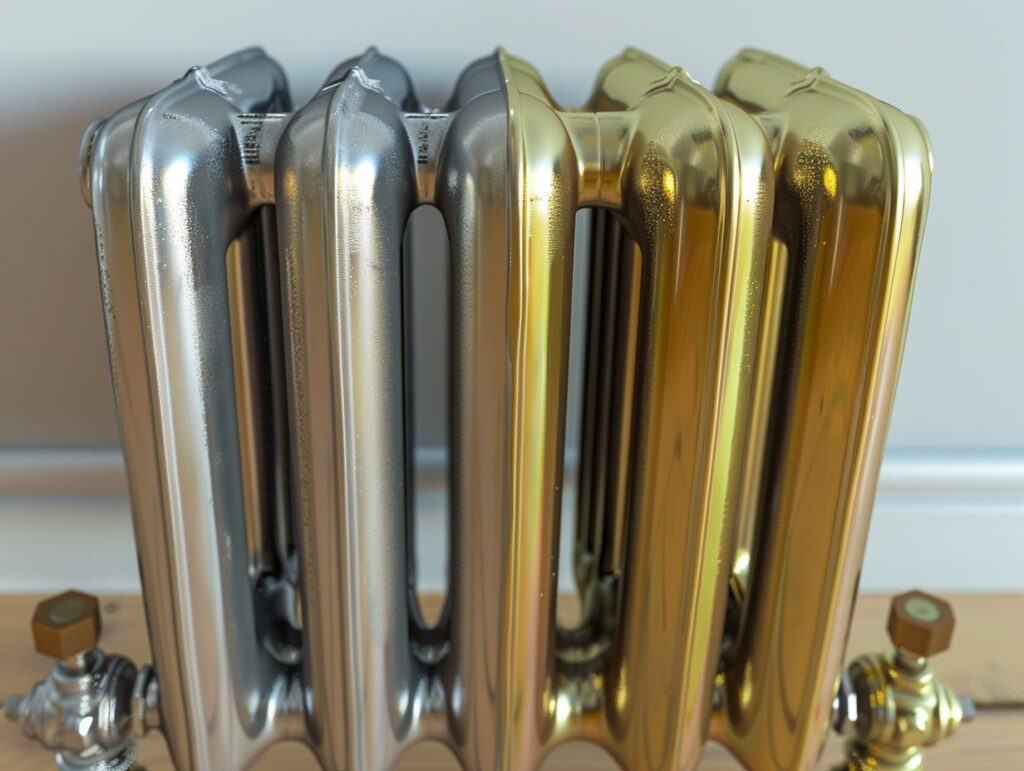If you are in the market for a new heating system for your home, one crucial factor to take into account is the material of the radiator.
This article will delve into the pros and cons of chrome heating versus brass heating. It will cover the benefits and drawbacks of each material, compare their heat efficiency, analyse cost variances, and evaluate maintenance requirements and durability.
After reading this article, you will have gained a deeper insight into which material is more effective and cost-efficient for your heating requirements.
Key Takeaways:
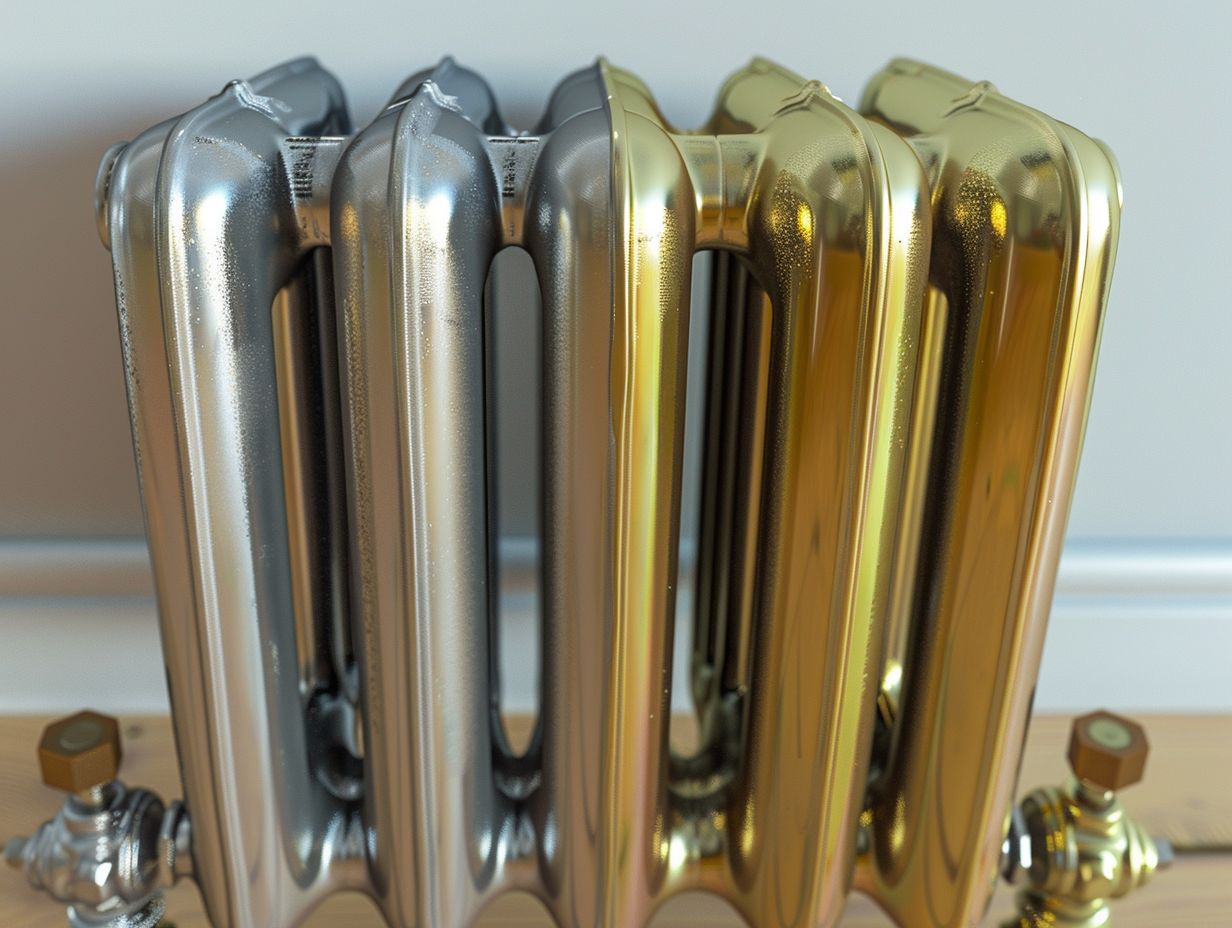
- Chrome heating radiators offer a sleek and modern look, but their high initial cost and potential for scratching may make them less desirable for some homeowners.
- Brass heating radiators provide a classic and elegant touch to a room, but they may require more maintenance and have a higher long-term cost due to their lower heat efficiency.
- The heat efficiency of chrome and brass heating radiators is similar, but brass may hold heat longer, making it a better option for larger rooms or homes in colder climates.
Pros and Cons of Chrome Heating
Chrome heating presents a sleek and modern design, making it a popular choice for households seeking a contemporary aesthetic. The chrome finish not only enhances the appearance of radiators but also provides excellent corrosion resistance.
Advantages and Disadvantages
Chrome heating offers several benefits, such as its elegant aesthetics, high heat efficiency, and resistance to corrosion. However, it is essential to note that chrome radiators may demand more upkeep to ensure their appearance remains impeccable.
The sophisticated and contemporary look of chrome heating can enhance the ambiance of any room, making it a favoured option for modern interior designs. This type of heating system not only warms up swiftly but also effectively disperses heat throughout the area, creating a comfortable setting.
Despite its resilience to rust and corrosion, chrome radiators are prone to displaying water spots and fingerprints easily, necessitating regular maintenance to sustain their lustrous finish. It is advisable to routinely clean and occasionally polish chrome heating units to uphold their radiant aesthetic.
Pros and Cons of Brass Heating
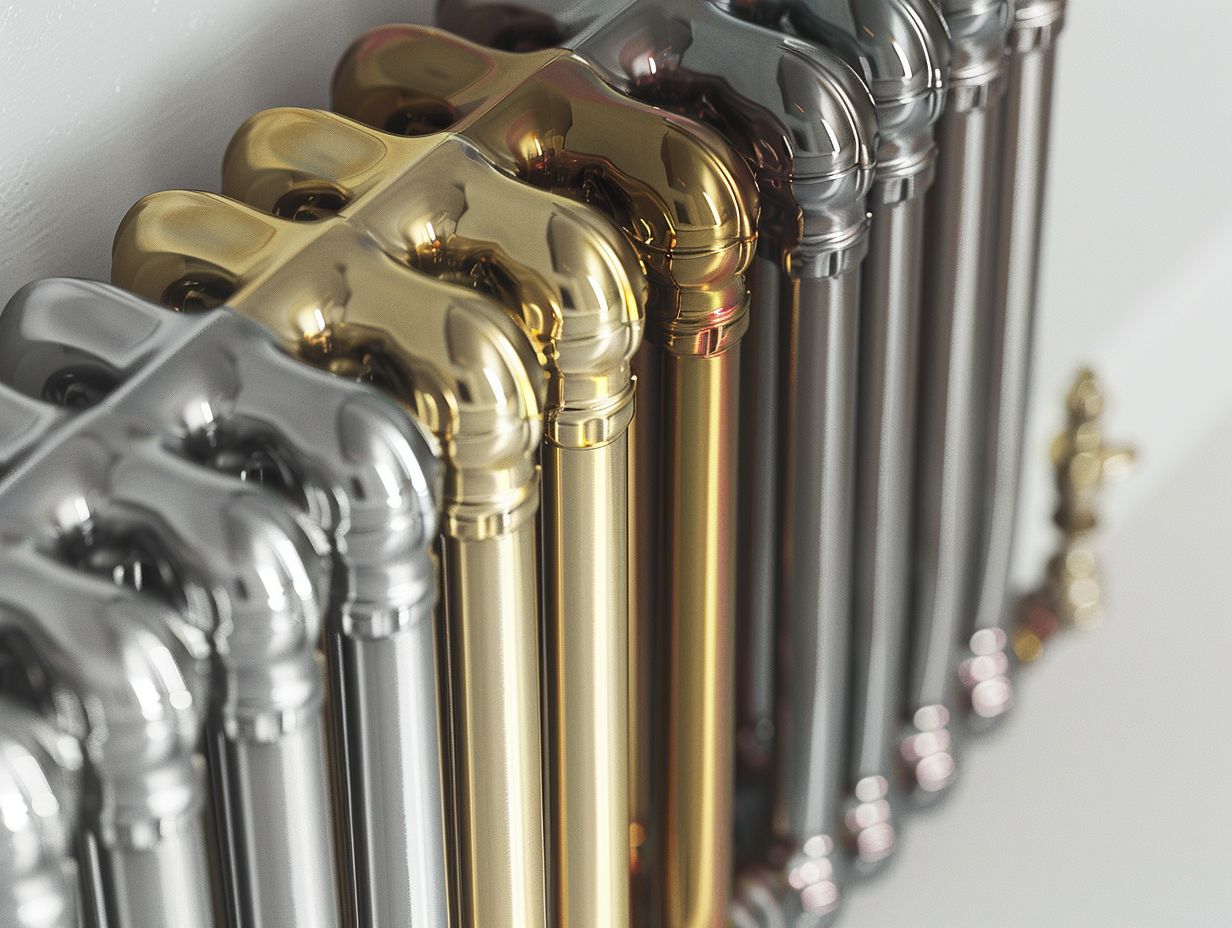
Brass heating radiators are favoured for their traditional and elegant appeal, making them a popular choice for heritage properties and period homes. The durability and classic look of brass radiators add a touch of sophistication to any interior.
Advantages and Disadvantages
When considering heating radiators, you may find that brass radiators offer a high-quality finish that exudes elegance and charm. This makes them a popular choice for homeowners seeking a touch of sophistication, although they may come at a higher cost compared to radiators made of other materials.
Opting for brass radiators has its advantages, particularly in their ability to elevate the overall aesthetic of a space. They provide a luxurious feel that can enhance any room’s decor, with a wide range of design options available to suit different interior design visions seamlessly.
Despite the initial cost, brass radiators are known for their durability and longevity, making them a worthwhile investment in both style and functionality. However, some budget-conscious individuals may be deterred by the upfront expense of brass heating, prompting them to explore more cost-effective alternatives.
Comparison of Heat Efficiency
When you compare the heat efficiency of chrome and brass heating options, it is crucial to consider the performance of both materials under various conditions. Each material presents unique advantages and performance characteristics that directly influence heating effectiveness.
Which is More Effective?
When determining which heating material is more effective between chrome and brass, various factors come into play such as popularity, heat retention capabilities, and overall heating performance. Understanding the properties of each material is crucial in making an informed decision.
Chrome, renowned for its stylish aesthetic appeal and durability, is a common choice in both household and commercial settings. It is preferred for its capability to distribute heat uniformly and retain it over an extended period, ensuring efficient warmth.
Conversely, brass, recognised for its exceptional heat retention qualities, excels in radiating heat effectively, making it a favoured option for achieving prompt and consistent heating. Considering these factors can aid in determining the most suitable heating material based on specific requirements.
Cost Comparison
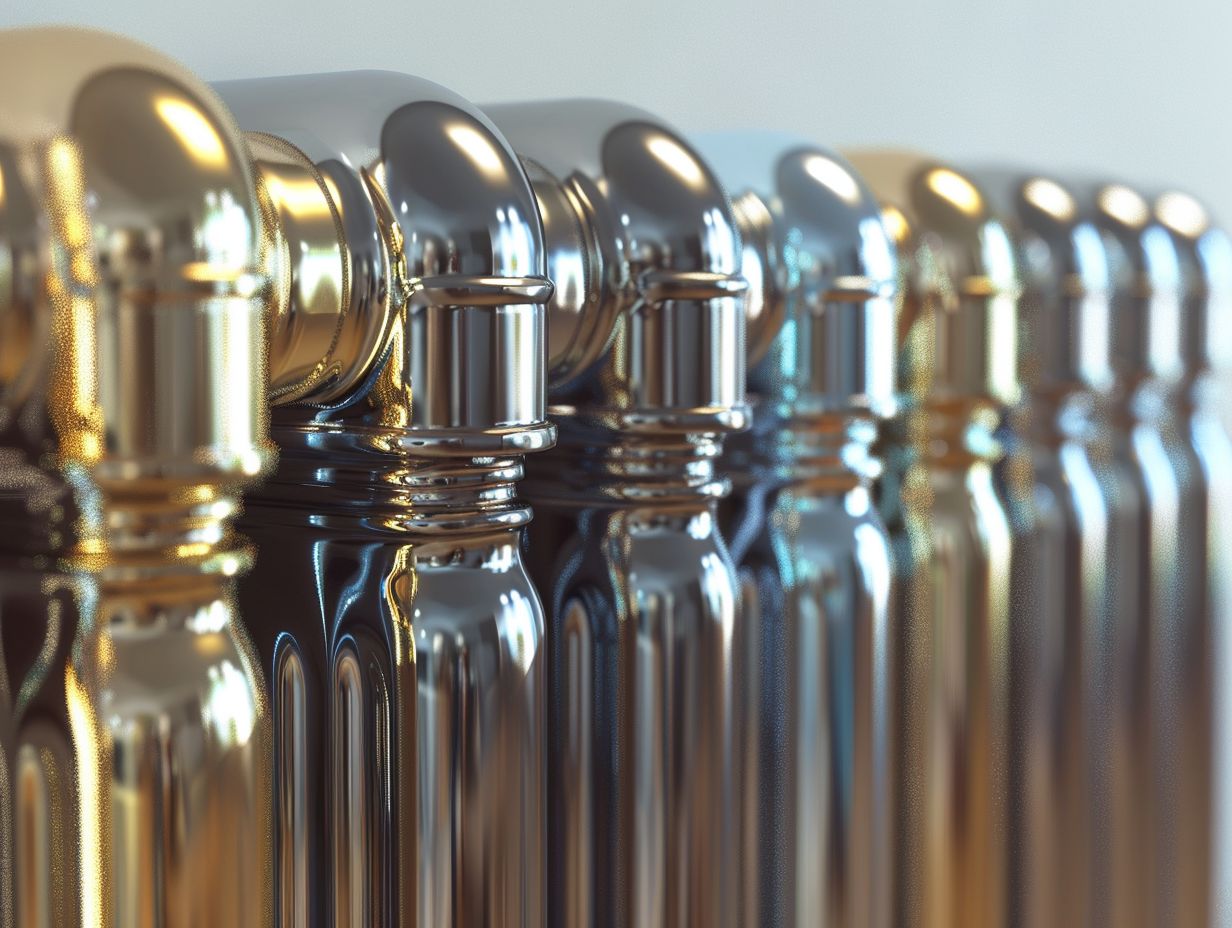
When comparing the costs of chrome and brass heating systems, you should analyse both the initial investment and long-term efficiency. Although brass radiators may require a higher upfront cost, their durability and efficiency could result in cost savings over time.
Initial and Long-Term Costs
When you are evaluating the initial and long-term costs of chrome and brass heating systems, it is crucial to consider the specific properties of each material, including durability, corrosion resistance, and maintenance requirements. These factors are pivotal in determining the overall cost-effectiveness of the heating solution.
Chrome is renowned for its exceptional durability, making it a preferred option for heating systems that demand longevity. Conversely, brass boasts remarkable corrosion resistance, particularly suited for environments where exposure to moisture is a significant concern.
In terms of costs, chrome heating systems may come with a higher upfront cost; however, they typically necessitate less maintenance over time, potentially leading to lower long-term expenses. On the other hand, brass, though initially more cost-effective, may require more frequent upkeep, thereby affecting its overall cost efficiency in the extended duration.
Maintenance and Durability
When considering the maintenance and durability of heating radiators, it is crucial to understand the role that different materials play in their longevity and performance.
Factors such as corrosion resistance, limescale buildup, and the types of material alloys used in construction must be taken into account when determining which material, whether chrome or brass, is easier to maintain and has a longer lifespan.
Which Material is Easier to Maintain and Last Longer?
Determining which material, whether chrome or brass, is easier to maintain and lasts longer involves evaluating factors such as construction quality, corrosion resistance, and the impact of limescale buildup. These considerations are essential in ensuring the longevity and optimal performance of heating radiators.
When comparing chrome and brass heating materials, maintenance and durability are key factors to consider. Chrome is renowned for its elegant appearance and resistance to tarnishing, although it can be susceptible to scratches that may affect its lifespan.
In contrast, brass is a robust material that can resist corrosion and mineral deposits, making it a preferred choice in the construction sector due to its durability.
Furthermore, the maintenance requirements differ between chrome and brass. Chrome needs regular cleaning to preserve its shine, while brass tends to develop a natural patina over time, decreasing the necessity for frequent polishing.
These distinctions should be taken into account when selecting the appropriate material for heating radiators to ensure their longevity and efficient operation.
Frequently Asked Questions
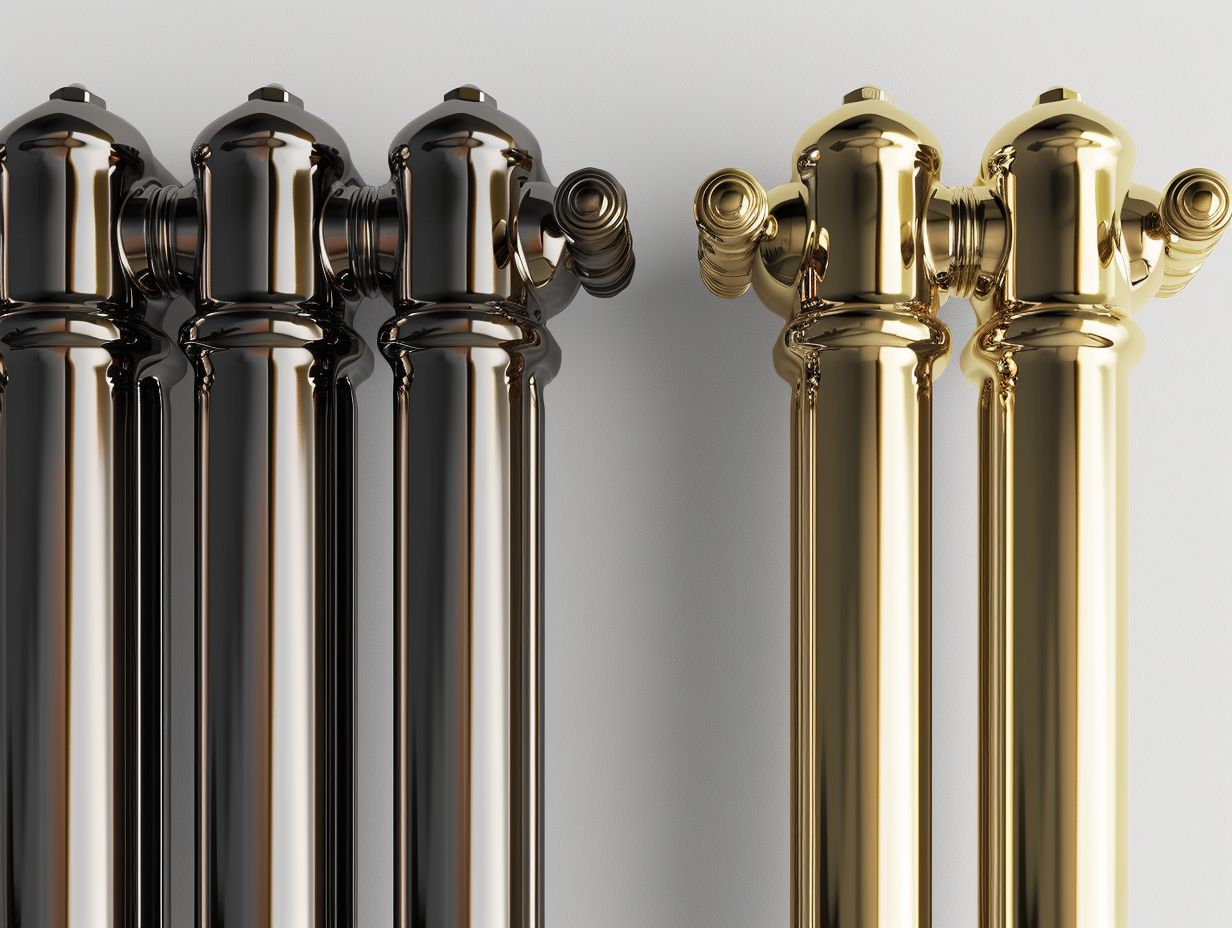
What are the main differences between chrome heating and brass heating radiators?
Chrome heating radiators are made from steel and coated with a layer of chrome, while brass heating radiators are made from brass alloy. This results in a difference in appearance, durability, and heat retention.
Which type of radiator is more durable, chrome heating or brass heating?
Brass heating radiators are generally considered to be more durable than chrome heating radiators. This is because brass is a more durable material than steel, and it is less prone to corrosion.
Do chrome heating radiators provide the same level of heat as brass heating radiators?
Both types of radiators provide the same level of heat. The difference lies in how they retain and distribute heat. Brass heating radiators tend to retain heat for a longer period of time, while chrome heating radiators heat up faster but may lose heat quicker.
Which type of radiator is easier to maintain, chrome heating or brass heating?
Chrome heating radiators are generally easier to maintain because the chrome coating makes them resistant to rust and other types of corrosion. However, both types of radiators require regular cleaning and maintenance to ensure optimal performance.
Are there any safety concerns when using chrome heating or brass heating radiators?
No, both types of radiators are safe to use. However, it is important to follow the manufacturer’s instructions for proper installation and usage to avoid any potential hazards.
Which type of radiator is more expensive, chrome heating or brass heating?
Brass heating radiators are typically more expensive than chrome heating radiators. This is due to the higher cost of brass as a material. However, the price may vary depending on the brand and quality of the radiator.

